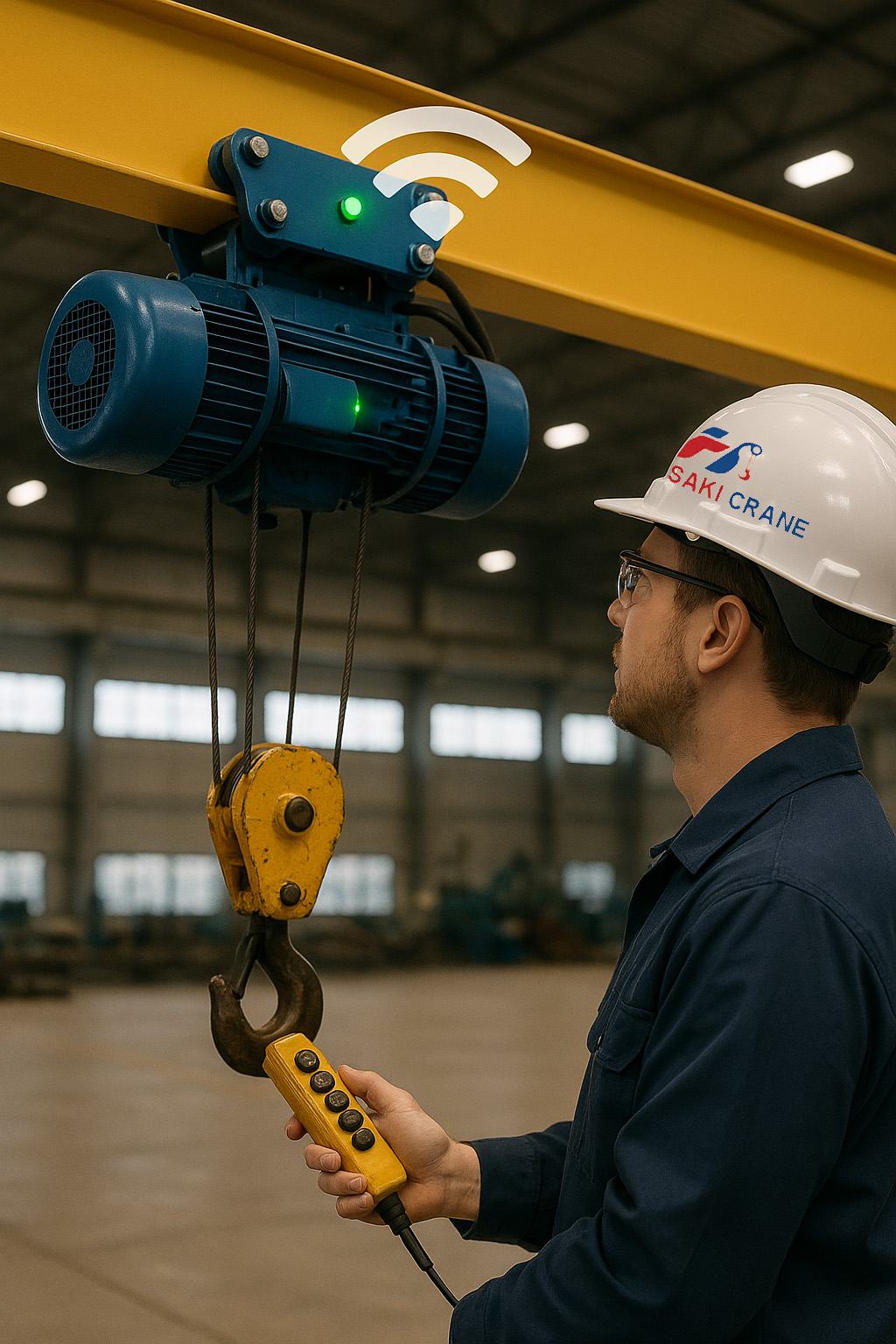Introduction to Crane Control Systems
Crane Control Systems refer to a set of technologies and devices used to control various functions of crane systems, including vertical movement (lifting or lowering loads), horizontal movement (left-right shifting), and the overall speed and position control of the crane. These control systems play a crucial role in ensuring crane operations that are precise, safe, and efficient.
Crane control systems have advanced rapidly with the advent of automation and sophisticated electronics, enabling cranes to operate with greater accuracy and predictability. With modern control systems, cranes can be operated more efficiently, reducing the risk of accidents and extending the operational lifespan of the equipment.
Main Components of Crane Control Systems
Crane control systems consist of several main components that work together to provide stable and responsive control. Some of the key components found in crane control systems are:
- Motor Control: The drive motor system, which controls the vertical and horizontal movements of the crane, can be managed through a Variable Frequency Drive (VFD) or inverter. VFDs allow smooth and precise motor speed regulation, which helps reduce vibration and enhances both comfort and safety in crane operations.
- Control Panel: The control panel is the main interface between the operator and the crane. This can be a traditional analog panel or an advanced digital panel that enables operators to control all crane functions efficiently. Digital panels are often equipped with touchscreens and status indicators that display the real-time condition of the crane.
- Sensors and Monitoring: Various sensors are used to monitor crane conditions, such as load sensors to ensure loads do not exceed capacity, position sensors to track load location, and temperature sensors to monitor motor or hydraulic system heat to prevent overheating. These sensors provide critical data for automatic control and safety adjustments.
- Remote Control: Remote control systems allow operators to operate cranes from a distance, enhancing both flexibility and operational safety. These can be wired remote controls or wireless remote controls based on radio or Bluetooth technology.

Crane Control Systems
Types of Crane Control Systems
Various types of crane control systems are used depending on the crane type, application, and desired level of automation. The most common types of crane control systems include:
- Manual Control: The simplest form of control, where the operator uses levers or buttons to move the crane as needed. This system provides direct control but requires higher operator skill and is less efficient in terms of precision.
- Automated Control: Cranes with automated control use PLCs (Programmable Logic Controllers) that can be programmed to perform specific tasks without manual input. This system enables more precise and safer crane operations while reducing the risk of human error.
- Sensor-Based Control: In this system, sensors are used to detect position and load. It is particularly useful for cranes handling heavy loads or working in hard-to-reach areas. Sensors provide direct feedback to the control system, which automatically adjusts crane movement based on the received data.
- Networked Control: This system integrates crane controls into a larger network, enabling the crane to communicate with other devices in the industrial environment, such as monitoring or maintenance systems. Through networking, cranes can operate more efficiently within automated production systems or interconnected work areas.
Advantages of Modern Crane Control Systems
With technological advancements, modern crane control systems come with various advanced features that provide many benefits for industries. The main advantages of modern crane control systems include:
- Increased Precision: Modern systems allow more precise movements with smoother speed and position adjustments. This is essential in applications requiring high accuracy, such as lifting extremely heavy loads or moving materials in tight spaces.
- Energy Efficiency: Advanced control systems, such as VFDs, enable efficient motor speed regulation, reducing energy consumption. Cranes can operate at lower power when full speed is not required, resulting in significant energy savings.
- Enhanced Safety: With multiple sensors and automated control systems, accident risks are reduced. For example, load sensors ensure the crane does not lift loads beyond its maximum capacity, while automatic systems can shut down the crane if technical issues are detected.
- Improved Durability: By optimizing crane operations, good control systems can extend the crane’s lifespan. Minimizing wear on motors and other mechanical components, as well as avoiding inefficient operations, helps prevent premature equipment damage.
- Remote Monitoring: Some modern crane control systems can be accessed remotely via applications or software, allowing monitoring and operation from a distance. This increases operational flexibility and enables real-time condition monitoring of the crane.
Integration of Crane Control Systems with IoT
In Industry 4.0, crane control systems are increasingly integrated with Internet of Things (IoT) technology. By using smart sensors connected to a network, real-time data on crane performance, motor condition, load, and other operational statuses can be collected and analyzed to improve efficiency and safety. IoT systems enable more dynamic and proactive crane operations, with the ability to detect issues before major failures occur.
Through IoT integration, data collected by cranes can be transmitted to cloud platforms or predictive maintenance systems, which then analyze usage patterns and provide recommendations for maintenance or recalibration to achieve optimal performance. This not only reduces maintenance costs but also prevents unplanned downtime.
Conclusion
Modern crane control systems play a vital role in ensuring efficiency, safety, and precision in hoist crane operations. By integrating advanced technologies such as PLCs, VFDs, smart sensors, and IoT systems, companies can optimize crane performance, boost productivity, and reduce the risk of accidents and equipment damage. Smarter crane control systems provide benefits not only in energy and operational cost savings but also in improving workplace safety and extending the operational lifespan of cranes.